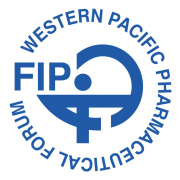Full moon lures thousands of blood donors in Sri Lanka
13 Jun, 2014
reference: http://www.who.int/features/2014/world-blood-donor-day/en/
To mark World Blood Donor Day 2014, thousands of volunteers have turned up at a centre in Colombo, Sri Lanka to donate blood in what is being claimed as South Asia’s largest blood drive.
Sri Lankans attach special importance to the act of blood donation. “Because most Sri Lankans follow Buddhism, blood donation is religiously and culturally accepted and very much a valued concept,” says Dr Namal Bandara, Senior Registrar of the National Blood Transfusion Service (NBTS).

This year, Sri Lanka is the host country for the global event of World Blood Donor Day. The day also coincides with Poson Poya (Full Moon Day), an annual religious holiday that marks the arrival of Buddhism in Sri Lanka and is a time for generosity and celebration.
Sri Lanka has already established a tradition of encouraging people to give blood every month when the moon is full. Social groups organize blood donation sessions on this day on their own premises – often temples, schools or universities. Some 85% of all donations in Sri Lanka are collected at these mobile sessions.
This year, the Poson Poya blood drive is generating even greater enthusiasm than usual, with around 3000 units of blood (approx. 450ml per unit) collected in one single day at the Bandaranayaka Memorial International Conference Hall in Colombo alone.
Unpaid, volunteer donors are safest
In just 10 years, Sri Lanka has achieved remarkable success in reaching a self-sufficient blood supply. In 2013, the National Blood Transfusion Service (NBTS) collected more than 380 000 units of blood, up from just over 150 000 units ten years ago. This year, NBTS has announced that 100% of all donated blood comes from voluntary, unpaid donors – up from 39% in 2003.
The safest source of blood is from regular, voluntary unpaid donors whose blood is screened for infections. WHO calls for all countries to obtain 100% of their supplies of blood and blood products from voluntary unpaid blood donors by 2020.
In Sri Lanka, every blood donor is personally interviewed and examined by a doctor before they donate blood. All donated blood is screened for HIV, hepatitis B and C, syphilis and malaria. The NBTS has a strict quality control system that works in collaboration with international laboratories to ensure high standards. Transfusion transmissible infection rates are significantly lower among Sri Lankan blood donors than in other countries in the region.
Central system coordinates blood supply

A key success factor in the country’s rapid rise to self-sufficiency has been the establishment of a centrally-coordinated national transfusion service and increased public awareness of the need for blood donation.
“Sri Lanka has demonstrated strong political will and effective community mobilization, which has resulted in comprehensive nationally coordinated blood transfusion services,” says Dr Poonam Khetrapal Singh, WHO Regional Director for South-East Asia.
The Sri Lankan Government has plans to further modernize its system with the introduction of state-of-the-art technology such as cord blood banking, stem cell collection and a computerized network to link all the blood banks.
Sri Lanka’s other innovations in recruiting blood donors include a card system (silver/gold/platinum) for milestone achievers in blood donation, a Facebook fan page, free cardiopulmonary resuscitation (CPR) training to target potential donors and annual health check-ups for selected donors.
Blood saves mothers’ lives
The theme for World Blood Donor Day 2014 is “Safe blood for saving mothers”.
Every day worldwide, almost 800 women die from causes related to complications of pregnancy and childbirth. Severe bleeding during delivery or after childbirth is the single biggest cause of maternal death and can kill a healthy woman within 2 hours if she is unattended. Urgent access to safe supplies of blood for transfusion is critical to saving these women’s lives.
“Since 2005, Sri Lanka has almost halved its maternal mortality rate to approximately 29 deaths per 100 000 live births,” says Dr Firdosi Mehta, WHO’s Representative in Sri Lanka. “This rate, one of the lowest in WHO’s South-East Asia Region, reflects the country’s quality maternal health services, including improved access to safe blood supplies for women giving birth.”
